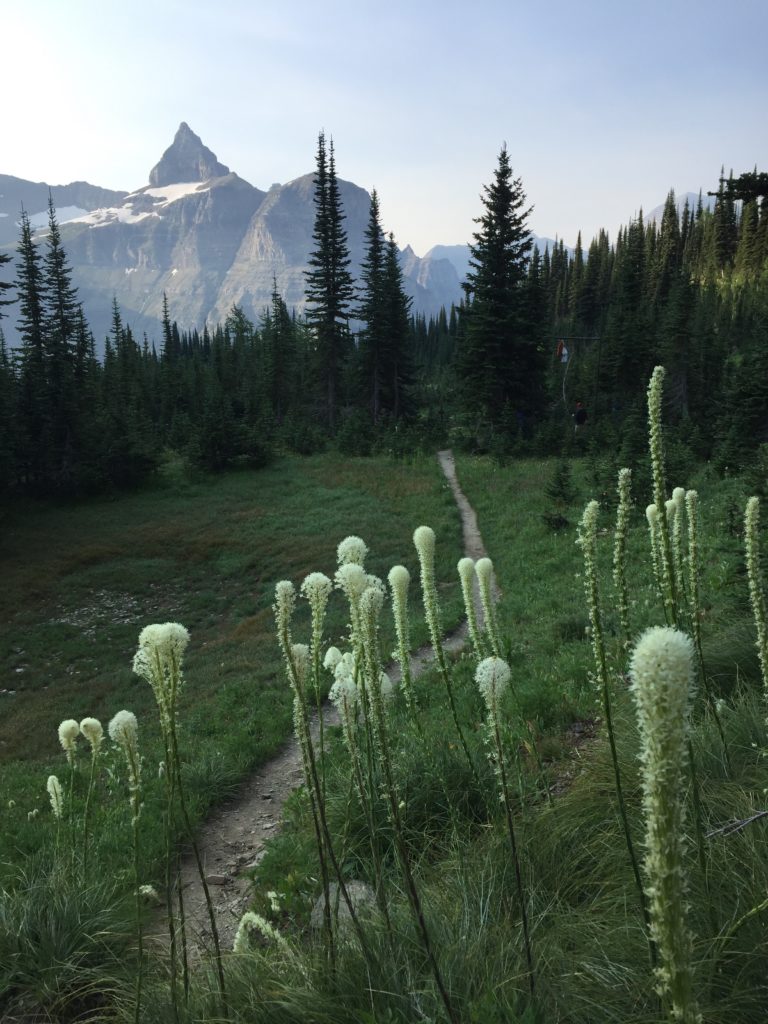Grinnell Glacier Trailis often visitors’ favorite, thanks in part to the elegant Many Glacier Hotel, dining room and ice cream parlor, its beach, nearby campground, and multiple trailheads. Options range from the full 10.2 miles roundtrip from the trailhead at Swiftcurrent Picnic Area or a shorter option to Grinnell Glacier via Glacier Park Boat Company’s tour boats, reducing the boot-pack by 1.7 miles each way.
Chief Two Gunstransports hikers across Swiftcurrent Lake where visitors disembark, walk a quarter mile to the next tour boat, Morning Eagle,for the crossing of Lake Josephine to reach the Grinnell Glacier Trail. (The boat company offers free guided hiking tours to Grinnell Glacier.) The route climbs above crystalline lakes rimmed with huckleberries, rugged peaks, and at trail’s terminus, three of the park’s famed glaciers: Grinnell, Salamander and Gem.
Near the base of Grinnell Glacier, visitors stand upon 1,600-million- to 800-million-year-old rock—Precambrian stromatolites, which are blue-green algae fossils that resemble large cabbages, evidence of Proterozoic life. Wildlife roam thick here—be sure to carry bear spray. Moose frequent the lake and shoreline. Bears graze on huckleberries. Bighorn sheep and mountain goats claim the rocky high country.

The Apikuni Fall Trailbegins at mile marker 10.4 along Many Glacier Road, and leads northward up to the falls, a 1.8-mile round-trip, gaining 650 feet. Viewpoints provide excellent photo spots for jagged peaks, wildflowers, and Gem Glacier. The falls remain hidden until 0.8 miles, and you may hear the falls before seeing them. Listen too for pika squeaking their alarm from hiding places among boulders.
While the trail ends before the cascade, an easy scramble leads to the pool at the base of Apikuni, the Blackfeet Indians’ term, “Spotted Robe,” a name given to explorer and historian James Willard Schultz. On the return trip, notice the once-thriving mining town of Altyn on the shore of Cracker Lake, where nearly 800 people lived between 1897 and 1902 while mining for copper.
Written by Jean Arthur













